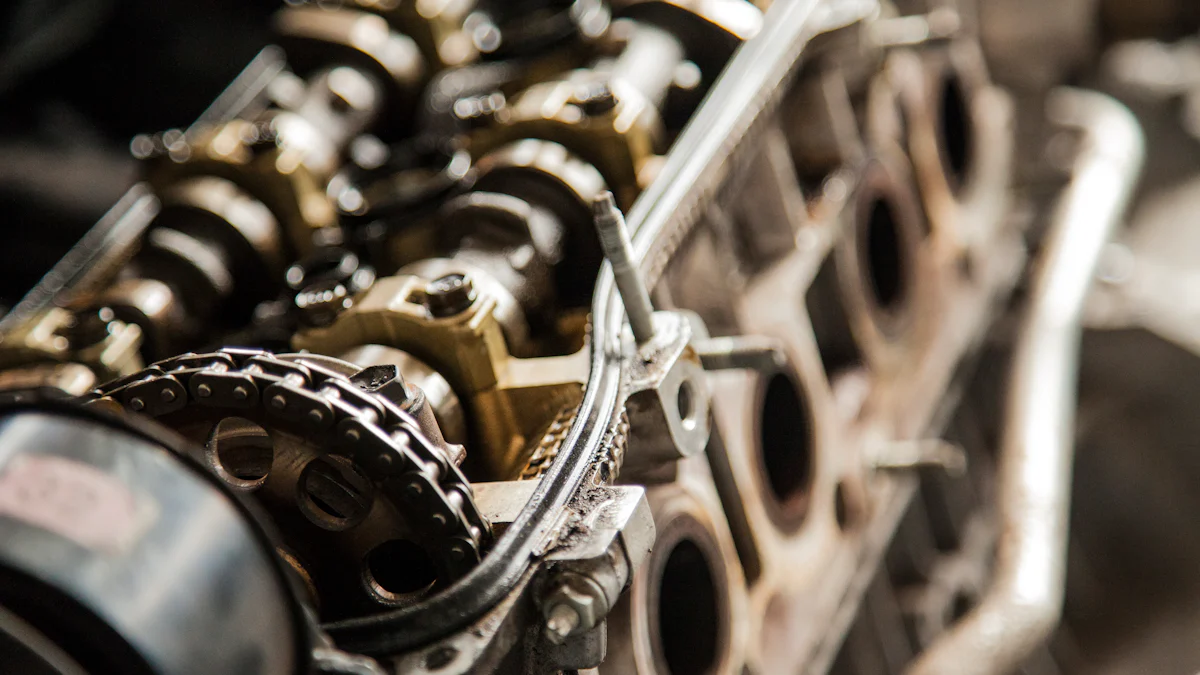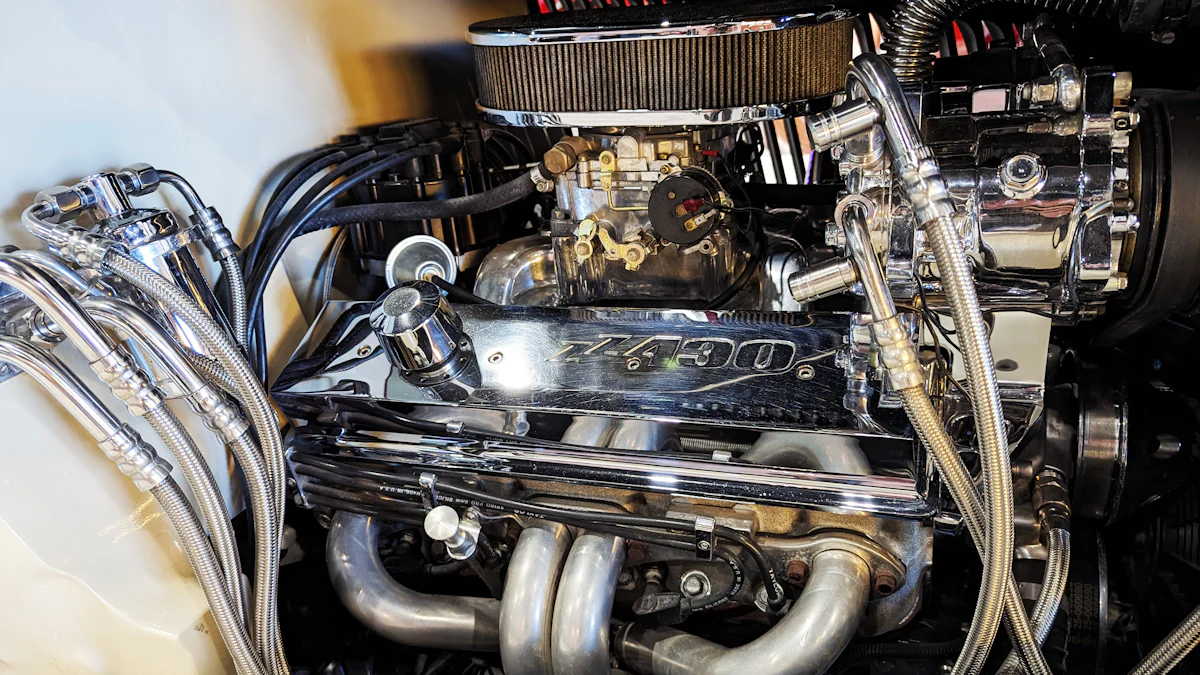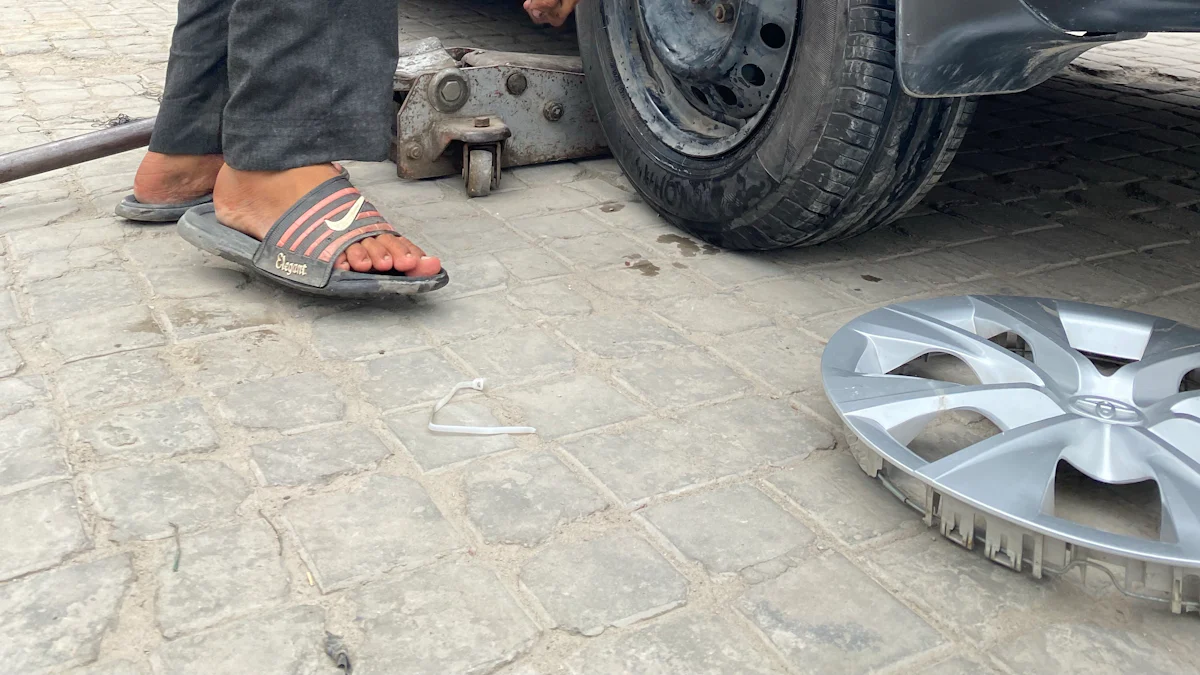
The harmonic balancer plays a pivotal role in optimizing engine performance. When focusing on the renowned 5.7 Hemi engine, precision becomes paramount. Today, we delve into the intricate world of 5.7 Hemi harmonic balancer torque specs, shedding light on the essential details that ensure seamless operation.
Importance of Torque Specs
When delving into the realm of engine performance, the significance of torque cannot be overstated. Jason Fogelson, a Senior Editor at Kelley Blue Book, emphasizes the pivotal role of torque in driving acceleration. He explains that torque is the force responsible for propelling your vehicle swiftly forward, especially during initial acceleration. This underscores the critical nature of understanding and adhering to proper torque specifications for components like the harmonic balancer in a 5.7 HEMI engine.
Role of Torque in Engine Performance
To comprehend the essence of torque, one must recognize its dual function in ensuring safety and optimizing engine efficiency.
Ensuring Safety
The application of correct torque specifications is not merely a matter of performance but also a crucial element in maintaining safety on the road. By tightening bolts to manufacturer-recommended levels, such as the 130 ft.-lbs specification for a 5.7 HEMI harmonic balancer, drivers can mitigate risks associated with loose components that could lead to malfunctions or accidents.
Enhancing Engine Efficiency
Beyond safety considerations, torque plays an integral role in enhancing overall engine efficiency. Properly torqued components ensure that energy is transmitted efficiently throughout the system, maximizing power output and minimizing energy loss due to mechanical inefficiencies.
Consequences of Incorrect Torque
Deviation from prescribed torque values can have detrimental effects on both engine longevity and performance.
Potential Engine Damage
Inadequate torque may result in undue stress on engine parts, leading to premature wear and potential damage over time. Components like the harmonic balancer rely on precise torque settings to function optimally without causing unnecessary strain on surrounding elements.
Reduced Performance
Moreover, incorrect torque application can directly impact engine performance by compromising the harmonious interaction between various parts. A poorly secured harmonic balancer, for instance, may introduce vibrations or irregularities that impede smooth operation and diminish overall power output.
As Jason Fogelson aptly puts it, “Torque is more important than horsepower when you first accelerate.” This statement underscores the foundational role that torque plays in setting vehicles into motion efficiently and safely.
Recommended Torque Specs
When it comes to the 5.7 Hemi Harmonic Balancer torque specs, precision is key for optimal performance. Understanding the manufacturer’s specifications and exploring potential aftermarket options can provide valuable insights into enhancing your engine’s efficiency.
5.7 Hemi Harmonic Balancer Torque Specs
Manufacturer’s Specifications
The manufacturer’s recommendations for the Harmonic Balancer torque play a crucial role in maintaining the integrity of your engine. By adhering to the specified 130 ft.-lbs torque, you ensure that the harmonic balancer functions seamlessly within your system. This precise torque setting guarantees that energy is transmitted efficiently throughout the engine, minimizing any potential risks associated with inadequate tightening.
Aftermarket Options
Exploring aftermarket options for your harmonic balancer can open up a world of possibilities for customization and performance enhancement. While staying true to the manufacturer’s specifications is paramount, aftermarket harmonic dampers can offer unique features tailored to specific preferences. Whether it be improved durability, enhanced balance, or increased power output, aftermarket options provide flexibility without compromising on quality.
Importance of Following Specs
Preventing Issues
Following the recommended torque specifications is not merely a suggestion but a necessity to prevent potential issues down the line. Inadequate torque can lead to loosening of components, creating safety hazards and compromising overall engine functionality. By meticulously adhering to the specified torque values, you safeguard your engine against avoidable malfunctions that could arise from improper installation.
Ensuring Longevity
Ensuring longevity in your engine’s performance requires attention to detail, especially when it comes to critical components like the harmonic balancer. By following the prescribed torque specifications diligently, you contribute to prolonging the lifespan of your engine and its various parts. Properly torqued harmonic balancers minimize wear and tear on surrounding elements, promoting sustained efficiency and reliability over time.
Tools and Installation Tips
Essential Tools
To ensure a successful installation of the harmonic balancer, it is imperative to have the necessary tools at hand. A Torque Wrench is an indispensable instrument that guarantees precise tightening of bolts to the specified torque values. This tool provides the required accuracy to secure components like the balancer bolt with optimal force. Additionally, a Harmonic Balancer Installer simplifies the process by facilitating the correct alignment and placement of the balancer onto the crankshaft.
Step-by-Step Installation Guide
Preparing the Engine
Before commencing with the installation, it is essential to prepare the engine for the task ahead. Begin by ensuring that the work area is clean and free from any debris that could interfere with the process. Inspect the crankshaft to verify its condition and confirm that it is suitable for accommodating the new harmonic balancer. This preliminary step sets a solid foundation for a smooth and efficient installation procedure.
Installing the Harmonic Balancer
With all preparations in place, proceed to install the harmonic balancer onto the crankshaft. Carefully align the keyway on the balancer with the corresponding slot on the crankshaft to guarantee proper positioning. Gently slide the balancer into place, taking care not to force it or cause any damage to either component. Ensure that it fits snugly against the crankshaft, ready to fulfill its crucial role in harmonizing engine operations.
Applying Correct Torque
The final step in this meticulous process involves applying 130 ft.-lbs of torque to secure the harmonic balancer in position effectively. Utilize your torque wrench to tighten the balancer bolt according to manufacturer specifications, ensuring that each turn brings you closer to achieving optimal tension. By adhering strictly to these torque values, you safeguard against potential issues arising from under or over-tightening, promoting both safety and performance.
Emphasizing the significance of precise torque specs is paramount for optimal engine performance. By adhering to the recommended 130 ft.-lbs torque for the 5.7 Hemi Harmonic Balancer, drivers ensure seamless operation and mitigate risks. The summary of recommended specs and essential tools like a Torque Wrench and a Harmonic Balancer Installer underscores the meticulous approach required for installation. Ultimately, prioritizing correct torque values safeguards both engine performance and driver safety.
Post time: May-28-2024





